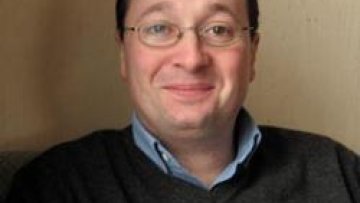Oxford Mathematician Chris Breward has been appointed as the inaugural Scientific Director of the UK’s new Knowledge Exchange Hub for Mathematical Sciences (KE Hub).
Block Functions induced by Persistence Morphisms
Abstract
One-dimensional persistent homology encodes geometric information of data by means of a barcode decomposition. Often, one needs to relate the persistence barcodes of two datasets which are intrinsically linked, e.g. consider a sample from a large point cloud. Such connections are encoded through persistence morphisms; as in linear algebra, a (one-dimensional) persistence morphism is fully understood by fixing a basis in the domain and codomain and computing the associated matrix. However, in the literature and existing software, the focus is often restricted to interval decompositions of images, kernels and cokernels. This is the case of the Bauer-Lesnick matching, which is computed using the intervals from the image. Unfortunately, this matching has substantial differences from the structure of the persistence morphism in very simple examples. In this talk I will present an induced block function that is well-behaved in such examples. This block function is computed using the associated matrix of a persistence morphism and is additive with respect to taking direct sums of persistence morphisms. This is joint work with M. Soriano-Trigueros and R. Gonzalez-Díaz from Universidad de Sevilla.
Lakes, rivers… and waterfalls? Modelling Antarctic Surface Hydrology
Abstract
The formation of surface meltwater has been linked with the disintegration of many ice shelves in the Antarctic Peninsula over the last several decades. Despite the importance of surface meltwater production and transport to ice shelf stability, knowledge of these processes is still lacking. Understanding the surface hydrology of ice shelves is an essential first step to reliably project future sea level rise from ice-sheet melt.
In order to better understand the processes driving meltwater distribution on ice shelves, we present the first comprehensive model of surface hydrology to be developed for Antarctic ice shelves, enabling us to incorporate key processes such as the lateral transport of surface meltwater. Recent observations suggest that surface hydrology processes on ice shelves are more complex than previously thought, and that processes such as lateral routing of meltwater across ice shelves, ice shelf flexure and surface debris all play a role in the location and influence of meltwater. Our model allows us to account for these and is calibrated and validated through both remote sensing and field observations.
Ocean tides in the outer solar system
Abstract
The giant planets, Jupiter and Saturn, all host several satellites that contain vast liquid water reservoirs beneath their frozen surfaces. These Ocean Worlds and some of the most compelling targets for future exploration of the solar system due to their potential for hosting habitable subsurface environments. The internal dynamics of these bodies is, as yet, largely unknown.
A key process that shapes the internal and orbital evolution of these systems is tides and the resultant dissipation of heat. I will review how these global ocean’s dynamically respond to the tide-generating potentials that are relevant in tightly-packed planetary systems, including the physics and mathematical techniques used to model global tidal flow. Oceanic dissipation rates due to tides will be estimated, including the effect of a thick global ice layer above the ocean and tides raised by neighbouring moons. I will end on recent work regarding the generation of weak mean flows via periodic tidal forcing.
MHD instability associated with critical layers
Abstract
Critical levels appear as singularities of waves propagating in shear flows. When magnetic field exists, critical levels are located where the phase velocity of the wave relative to the basic flow matches the velocity of Alfvén waves. Critical levels are known for locally strong wave amplitude in its vicinity, known as the critical layers. In this talk, I will demonstrate the situation where magnetic critical layers can contribute to the instability of the MHD flow. We consider two different flow configurations. One is the shallow water flow, and the other is the 2D flow on a sphere. Asymptotic analysis has been used to explore deeper insights of the instability mechanism.
14:30
Approximating Functions of Sparse Matrices using Matrix-vector Products
Abstract
The computation of matrix function is an important task appearing in many areas of scientific computing. We propose two algorithms, one for banded matrices and the other for general sparse matrices that approximate f(A) using matrix-vector products only. Our algorithms are inspired by the decay bound for the entries of f(A) when A is banded or sparse. We show its exponential convergence when A is banded or sufficiently sparse and we demonstrate its performance using numerical experiments.


